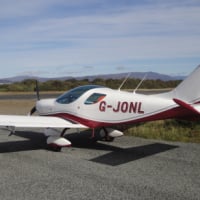SmartSDR v3.9.19 and the SmartSDR v3.9.19 Release Notes
SmartSDR v2.12.1 and the SmartSDR v2.12.1 Release Notes
The latest 4O3A Genius Product Software and Firmware
Need technical support from FlexRadio? It's as simple as Creating a HelpDesk ticket.
1.9.7 and API-based controllers

- The CW break-in is significantly better. Gone is the bleed through of RX noise in the audio stream as the radio goes to TX. The break in is now truly superb.
- The audio clicks while tuning with an external controller seem to have gone completely.
- Tuning with an external controller seems much smoother and more responsive.
So, software gurus at FlexRadio: thanks, you've done a great job.
73, John, G3WGV
Comments
-
I knew you would like it! Wait until you play around with the different latency settings for filters, etc!
Ken - NM9P0 -
Ken... could you explain in this or a new thread what the latency settings actually do and what it means for the average ham (assuming I'm kinda average). Maybe there's enough new material in this update for one of your video tours?
Kevin - K4VD0 -
Creating steep skirted filters is a CPU intensive activity, so the steeper you make them the more time it takes to do the processing, resulting in higher latency. Flex now gives you the option to have super sharp filters OR have minimum latency. There's also two intermediate steps that provide a balanced performance.
In practice, I should think the only time you would worry about latency is when you are dealing with highly synchronous traffic that has critical timing. Not being a data modes person I don't have any specific examples.
Play with the settings - the effect is instantly apparent.
73, John, G3WGV
0 -
Wonderful project! Thanks for sharing!0
-
"the steeper you make them the more time it takes to do the processing, resulting in higher latency"
Respectfully John, this is not quite correct. Latency occurs in real-time DSP processing for a couple of reasons, computational complexity is not one of them.
One reason latency occurs is that filtering causes delay, period. Typically, the delay is proportional to the width of the filter. Since increased selectivity requires a wider filter, it also increases delay.
Another source of latency can be algorithmic. For example, if at any point in the algorithm samples are processed en masse, you have generated latency proportional to the size of the sample group.
0 -
Steve... does this go for analog as well as digital filters? The more filter poles the more latency? I have never had an issue with latency on any rig I've owned and not sure the amount of latency we are talking about here would be discernible by just listening.
I still haven't tried the different settings but I will.0 -
Kevin, sorry to respond so late. I shut off email alerts awhile ago. Here is a link that compares analog and digital filters. Halfway down your question is answered.
https://en.wikipedia.org/wiki/Digital_filter#Comparison_of_analog_and_digital_filters
1 -
Thanks for the link Steve. Good reading and questions answered.0
Leave a Comment
Categories
- All Categories
- 328 Community Topics
- 2.1K New Ideas
- 593 The Flea Market
- 7.8K Software
- 6.2K SmartSDR for Windows
- 168 SmartSDR for Maestro and M models
- 396 SmartSDR for Mac
- 260 SmartSDR for iOS
- 246 SmartSDR CAT
- 179 DAX
- 369 SmartSDR API
- 9.1K Radios and Accessories
- 15 Aurora
- 158 FLEX-8000 Signature Series
- 7.1K FLEX-6000 Signature Series
- 909 Maestro
- 51 FlexControl
- 854 FLEX Series (Legacy) Radios
- 872 Genius Products
- 446 Power Genius XL Amplifier
- 311 Tuner Genius XL
- 115 Antenna Genius
- 278 Shack Infrastructure
- 196 Networking
- 438 Remote Operation (SmartLink)
- 135 Contesting
- 721 Peripherals & Station Integration
- 136 Amateur Radio Interests
- 942 Third-Party Software

